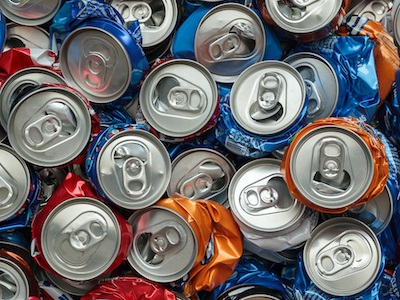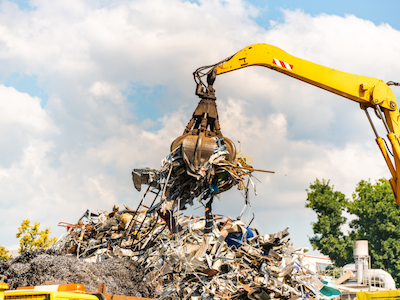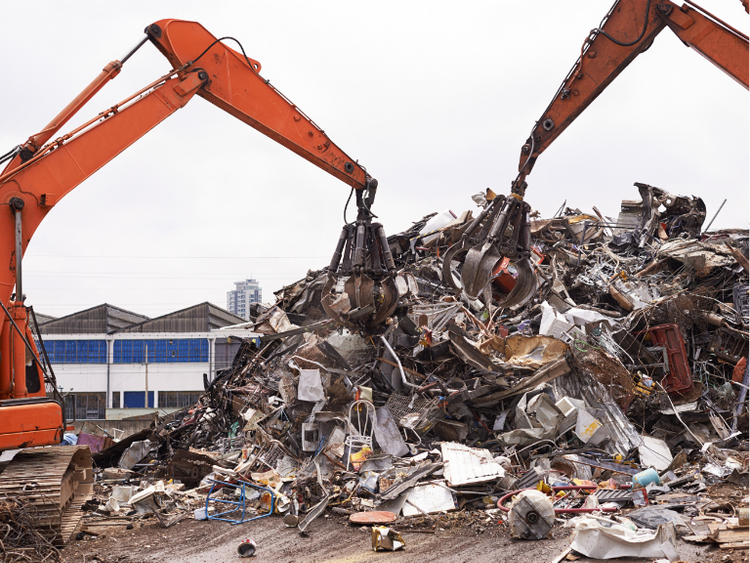Scrap Processors

June 11, 2024
Leibowitz: From bottles to beaches, the global struggle with recycling and waste
Written by Lewis Leibowitz
When I was growing up, I liked to drink Cokes. If you (or your parents) bought Coke at the grocery store, they only came in one form: six-ounce returnable bottles. You paid a deposit of two cents per bottle, which was refunded to you when you brought the bottles back.
This was an early form of recycling, and it was borne of economics. Coca-Cola and other beverage companies found that manufacturing glass bottles was expensive, and the deposit-return system meant that fewer new bottles needed to be made. This reduced costs. The two-cent fee encouraged consumers to bring the bottles back.
But the system was not perfect — few systems are.
During the 1960s and 1970s, the system broke down, partly because cheaper manufacturing methods (such as plastic and aluminum containers) replaced glass, and partly because consumer tastes and purchasing patterns changed (two-liter bottles, for example).
That’s when government started to get into the act, encouraging recycling programs. In the U.S., these attempts in the 1960s and 1970s were largely unsuccessful, because the beverage producers lobbied against government imposing costs on them. And manufacturing jobs in the beverage industry would be lost.
Over the last few years, however, the problem of waste has gotten worse, and pressure on beverage companies has increased dramatically. While the federal government has not enacted comprehensive regulations on recycling, the EPA is very active in the area of hazardous waste, a term very hard to succinctly define.
In recent years, as international trade has grown, a rather distasteful practice has expanded with it. Sometimes called “waste colonialism,” developed countries produce more waste and send it to developing countries, for a fee. The waste ends up in trash dumps and on beaches, creating health and safety problems and jarring eyesores. Plastic waste (bottles and bags) is a huge part of the problem. Other materials, such as cardboard containers and pallets, are major exports from the developed world.
Developing countries are fighting back, passing laws prohibiting the importation of waste from developed countries and even sending back the containers of waste from whence they came.
The European Union recently took the side of the developing world, adopting a regulation restricting exportation of waste to developing countries. The rule took effect last month. European companies opposed the rule because it increases the costs of recycling and saddles them with more financial responsibility for cleanup.
Countries around the world are pushing recycling of plastics and other materials, and are not likely to stop this effort. In addition to the pollution caused by waste disposal, countries and environmental activists claim that the proliferation of plastic, a petroleum product, leads to more oil and gas production and therefore to climate change.
Metals recycling is a different matter, because reusing old metal is a financially viable pursuit. It has been for more than a century. Industrialization fueled metal production and metal recycling. Many old cars have been harvested for their metal content. During World War II, scrap drives focused on metals, as well as paper and rubber because they were needed for the war effort and domestic production of virgin products was insufficient.
After the war the demand for recycling waned, but never disappeared. In steel, scrap metal was long used in steel production. In the second half of the 20th century, electric furnace steelmaking took hold, which relies on steel scrap as a major raw material.
Aluminum recycling is at least as mature as steel recycling. Aluminum beverage cans have been available since the 1970s. Now, according to industry estimates, on average nearly three-fourths of every new can is recycled material.
The value of steel and aluminum as raw material for new manufacturing means that trade issues are different. Indeed, instead of sending steel and aluminum to developing countries, the scrap is often recycled here at home, or segregated and exported to other metal-producing countries. While the U.S. has run a consistent trade deficit in goods for 50 years, it runs a consistent trade surplus in steel and aluminum scrap.
Even so, more needs to be done to encourage recycling.
In fact, steel producers have occasionally advocated restrictions on U.S. scrap exports to keep domestic scrap prices low. In steel, this primarily benefits the electric furnace segment of the steel industry, which is the predominant user of steel scrap. Limiting exports has similar effects on prices as increasing imports. In this, steel producers, like steel consumers, tend to prefer more competition in markets for their production inputs, while they prefer less competition in finished product markets.
How the government can influence trade flows in waste and scrap is still a work in progress. On one side, materials that do not have ready private markets need government help to create financial incentives to increase recycling.
Plastic is a leading example of a market that needs government help, as it is a major source of pollution of oceans. While plastic recycling is increasing, it’s not enough to stop the waste from proliferating. Just take a look at beaches in Ghana or Malaysia to see the effects.
In the United States, the federal government has encouraged recycling efforts, as shown by private commercial campaigns by beverage companies (see, for example, everybottleback.com). And several states have passed or are considering legislation to encourage private companies to take responsibility for packaging.
This is a new area for international negotiation, which means government and private industry need to experiment. The developing world needs to find ways to reduce production of polluting waste and to impose costs on those companies that generate it and profit from it.





